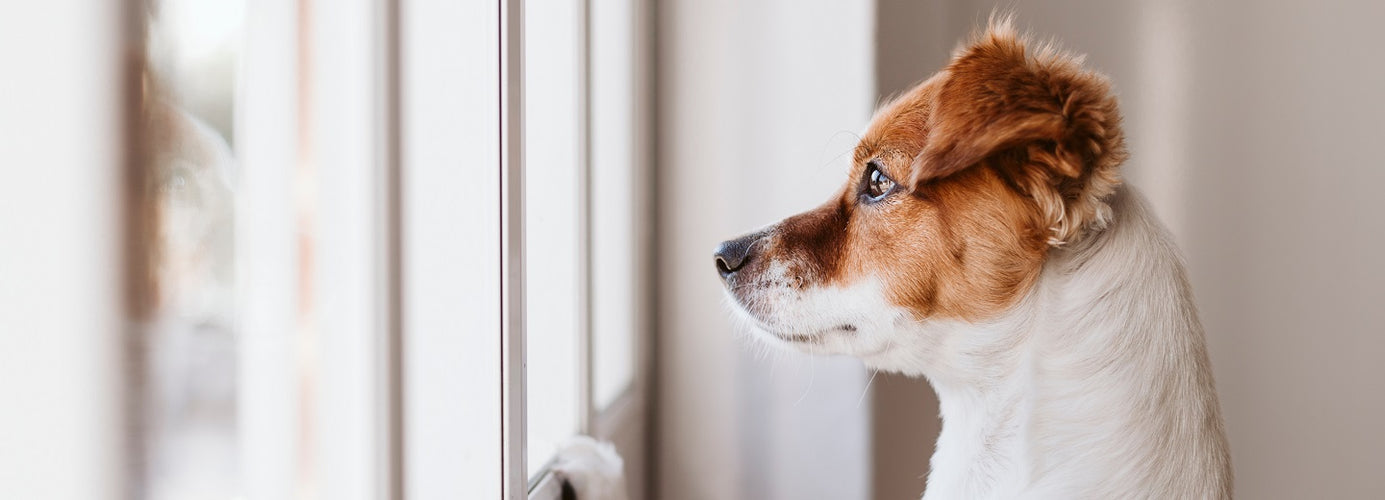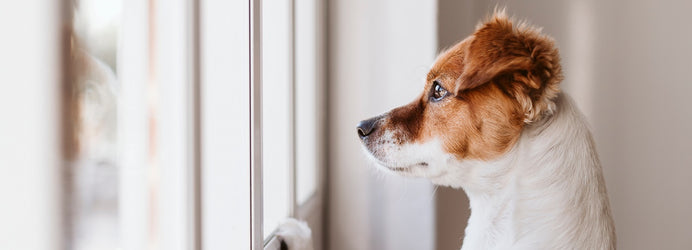

Posted by Emma Oldroyd, on
Separation Anxiety: How to Help Your Dog Cope with Your Return to School and Work
At Pets & Friends we want to help your family find the right routine and avoid separation anxiety- our pet behavioural specialist offers some advice on how to help your pets deal with the sudden separation.

What is separation anxiety?
Separation anxiety or separation related behaviour (SRB) happens when dogs become distressed whilst separated from their owner. According to RSPCA research, 8 out of 10 dogs don’t cope when left alone, leading to destructive behaviour, barking and toilet accidents.
What are the signs?
Some signs are more obvious than others when it comes to separation anxiety, it’s important to look out for any of the following:
-
Destructive behaviour such as chewing or ripping
-
Becoming more vocal
-
Toilet accidents in the house
-
Pacing
-
Vomiting (whilst this is a less obvious sign- you should always keep a close eye on your dog if they are vomiting)
These signs don’t usually occur whilst you’re at home and take place during the day- it’s important to check for the hidden signs. Maybe ask a neighbour if they have heard any barking or howling and checking furniture for damage upon your return. Some smart home appliances also have a ‘check-in’ option so you can watch your dog whilst you are out of the house.
How to help
Dogs become distressed alone for various reasons, from boredom through to fear. Luckily, there are many ways to help your dog become more comfortable being home alone. There are even products available to help comfort dogs such as Pet Remedy or Adaptil diffusers.
Give them their space
If your dog has become used to being able to wander the house freely, buying stair gates as an alternative to closing doors to their daytime room is a good way of settling them back into routine. They can see other rooms in the house, helping avoid the feeling of being shut out (or shut in).
Making sure their daytime space is comfortable and familiar is key to helping them feel secure in this space again: they can snuggle up in their bed, play with their favourite toys and have their water bowl to hand so they don’t have any other needs to wander the house.
Keep them entertained
When you can’t be together as a family, puzzle toys and slow feeding food toys are a great way to distract your pet whilst you’re away from home. Filling their toys with treats or introducing a fun puzzle feeder will help give them mental stimulation throughout the day. Not only with these occupy your dog but it will tire them out, encouraging a nice long nap before you return.
Some dogs are susceptible to noises outside the home, so leaving the radio or TV on to help minimise their disturbances can also help them relax.
Enjoy your time together
A walk before you leave the house for work is also a good way to help your dog relax, they can go to the toilet and exercise, so they are prepared for the day ahead.
If your dog has missed you during the day, let them know you’ve missed them too! Take walks and playtime up a notch with new interactive toys, or venture to new spaces and spend more time outdoors together to reassure your dog that your relationship is still as important as ever.
